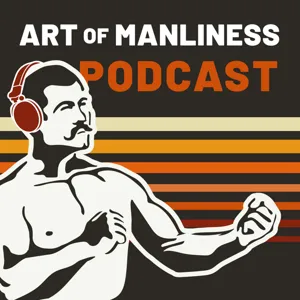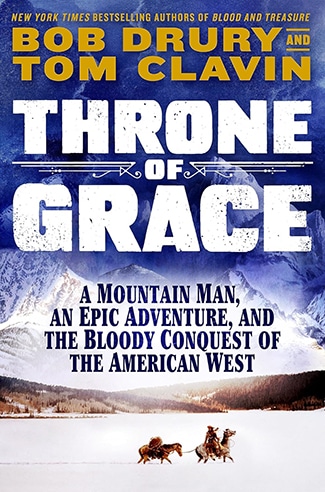Podcast Summary
The pursuit of the four-minute mile record: Despite skepticism, athletes persevered to break the four-minute mile barrier, demonstrating the power of determination and the transformation of sports.
This achievement, which was once believed to be physiologically impossible by many doctors, required immense grit, determination, and mental fortitude. The story of their pursuit of this record is not just about Banister, but also about the transformation of sports from an amateur pursuit to a professional job and the power of the human mind to push the limits of the body. The four-minute mile record had been a goal since the late 1800s, and runners had been chipping away at it for decades. The story of these athletes' achievements offers valuable lessons on the power of perseverance and the importance of balancing passion and dedication with a well-rounded lifestyle.
The Four-Minute Mile: A Historical Milestone: The balance between speed and endurance led to the four-minute mile being a unique and elusive goal. Serious training methods, like two-a-day sessions, eventually led to its achievement in 1954 by Roger Bannister.
The four-minute mile was once considered an impossible feat in athletics, both from a physiological and psychological standpoint. The perfect balance between speed and endurance required to run a mile under four minutes made it a unique and elusive goal. Training methods at the time were not particularly advanced, with most runners relying on long-distance runs and limited intervals. The ethos of athletics during this period emphasized fun and effortlessness, with coaches being largely scorned. It wasn't until the 1950s that serious training methods, such as two-a-day sessions, began to emerge and ultimately led to the first sub-four-minute mile by Roger Bannister in 1954.
Amateur Athletes and the Four-Minute Mile: During the time when the four-minute mile was broken, amateur athletes had a balanced life and considered sports as one of many things they did. They pushed personal records and achieved great feats, illustrating the last moments of the amateur athletic era.
The world of athletics during the time when the four-minute mile was broken was vastly different from today. Amateur athletes did not dedicate their entire lives to training and making a career out of sports. Instead, they had a balanced life and considered sports as just one of many things they did. The anecdote of Bevel Ridged, a cigar-chomping Oxford sprinter who won a race and casually picked up his still smoking cigar, illustrates this mindset. West Santee, an American trying to break the sub-four-minute mile, came from a background where his father wanted him to work on the farm instead of focusing on athletics. He saw running as a way out and became a great miler in college. The amateur spirit of pushing personal records and achieving great feats was also present in other areas, such as mountaineering. The story of these athletes trying to break the four-minute mile during this time encapsulates the last moments of the amateur athletic era.
Wes Santee's pursuit of the sub-four minute mile: Despite determination and weekly racing, opposition from the AAU and physical toll prevented Wes Santee from achieving the sub-four minute mile, while rivals Roger Bannister and John Landy succeeded
The journey of Wes Santee, a brash and charismatic runner aiming to break the four-minute mile, was marked by constant competition, high expectations, and the challenges of transitioning from amateur to professional athletics. Despite his determination and weekly racing, Santee faced opposition from the AAU, which ultimately banned him from competition during the crucial moments of his pursuit. This unfortunate turn of events, combined with the physical toll of overrunning and overcompeting, prevented him from achieving the coveted sub-four-minute mile. The stark contrast lies between Santee's multifaceted responsibilities and the singular focus of his rivals, Roger Bannister and John Landy, who successfully broke the four-minute mile in 1954.
The influence of unique backgrounds and coaches on legendary runners: Legendary runners, such as Roger Bannister, John Landy, and Wes Santee, reached their athletic milestones through diverse backgrounds and unconventional training methods, highlighting the importance of individual experiences and coaching in achieving success.
The backgrounds and training methods of legendary runners, such as Roger Bannister, John Landy, and Wes Santee, greatly influenced their pursuit of breaking the four-minute mile barrier. Bannister's focus on academic excellence and disciplined training under Sir Edward Lanigan-O'Keeffe led him to become the first person to achieve this feat. Landy, an Australian runner, faced a lack of focus on running in his country but thrived under the unconventional coaching of Percy Cerutty, who emphasized barefoot running, sand dunes training, and a vegetarian diet. Santee, an American, faced adversity with the AAU expulsion but continued to pursue his dream, eventually selling insurance to support his family. All three runners' unique experiences and training methods demonstrate the significant impact of individual backgrounds and coaches on athletic achievements.
Two Different Approaches to Breaking the Four-Minute Mile: John Landy focused on putting in the miles and learning from others, while Roger Bannister combined his love for running with a scientific approach, leading to their successful attempts to break the four-minute mile barrier.
The journey to breaking the four-minute mile was different for each athlete. For John Landy, it was about putting in the miles and learning from others. For Roger Bannister, it was about combining his love for running with his scientific background to approach the goal in a more methodical and research-driven way. Landy's training was more about trial and error, while Bannister's was more scientific, with experiments on VO2 max and lactic acid. Despite their different approaches, both athletes' determination and competitive will played a crucial role in their pursuit of this iconic milestone in athletics history.
The Power of Collaboration in Achieving Goals: Roger Bannister's historic run was aided by teamwork and external support, demonstrating the importance of collaboration in reaching personal goals.
Roger Bannister's historic achievement of breaking the four-minute mile barrier in 1954 was not solely a result of his own determination and training, but also the support and pacing of his friends and coach. Prior to this, Bannister had been training alone, but as he got closer to the record, he recognized the need for external help. This team approach, which included his friends Chris Chadaway and Chris Brasher as pacers, allowed him to reach his goal. Despite criticism that using pacers made his achievement less legitimate, it's clear that Bannister's success was a testament to the power of collaboration and the importance of recognizing one's limitations.
The Rivalry Between Bannister and Landy: In 1954, Roger Bannister and John Landy raced to be the first to break the four-minute mile barrier. Landy won, but their competition marked the shift from amateur to professional athletics and captivated global audiences.
The breaking of the four-minute mile by Roger Bannister on May 6, 1954, was a remarkable achievement, but it was not the end of the story. Six weeks later, John Landy also broke the four-minute mile, and in doing so, he beat Bannister's time by almost a minute and a half. This race between Bannister and Landy was a cultural phenomenon, captivating world audiences and marking the beginning of the evolution from amateur to professional athletics. Despite some uncertainty about who was favored to win their epic showdown at the Commonwealth Games in August 1954, Landy was generally considered the faster runner and was in better shape. The media attention surrounding this international event was tremendous, and it drew a significant amount of tension and excitement.
Race between Landy and Bannister for the first sub-four minute mile: Bannister's determination and focus allowed him to outperform Landy, the dominant runner, despite Landy's fast start and consistent lead. Bannister retired from running to pursue a career as a neurologist, while Landy continued to compete and became a beloved figure in Australia.
The race between Landy and Bannister for the first sub-four minute mile was a dramatic and intense competition. Landy was the dominant runner with a fast start and consistent lead, but Bannister, known for his competitive spirit and killer instinct, managed to close the gap and win by making his final kick count. Despite Landy's injury and lead, Bannister's determination and focus allowed him to outperform him. After the race, Bannister retired from running to pursue a career as a neurologist, while Landy continued to compete, becoming a beloved figure in Australia and eventually serving as the governor of Victoria.
Breaking the 4-minute mile: heart, will, and mind: The pursuit of greatness in sports requires a combination of heart, will, and mind to break barriers and achieve the impossible.
The pursuit of greatness in sports, as demonstrated by the stories of Roger Bannister, John Landy, and Wes Santee, requires a combination of heart, will, and mind. The mile race, once a symbol of athletic achievement, has been overshadowed by other events and records, but the determination and passion of these runners serve as enduring examples of what it takes to break barriers and achieve the impossible. While the idea of an amateur elite athlete may be a thing of the past, the joy and pure enjoyment of running for its own sake remains an important lesson.













